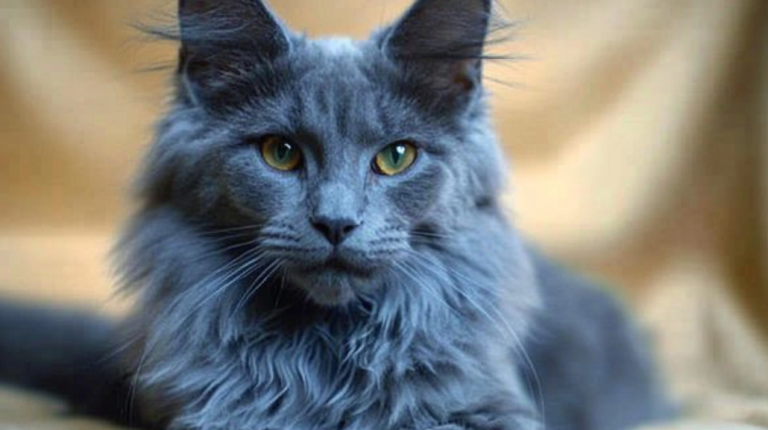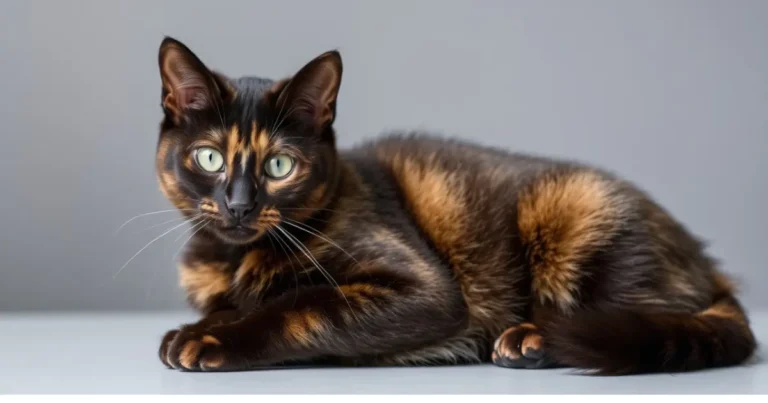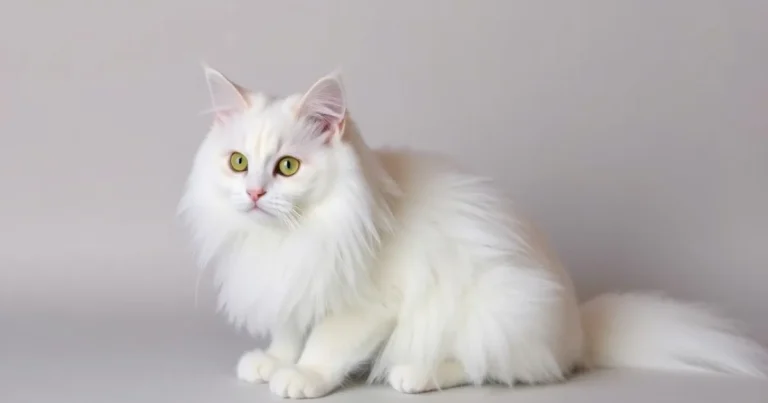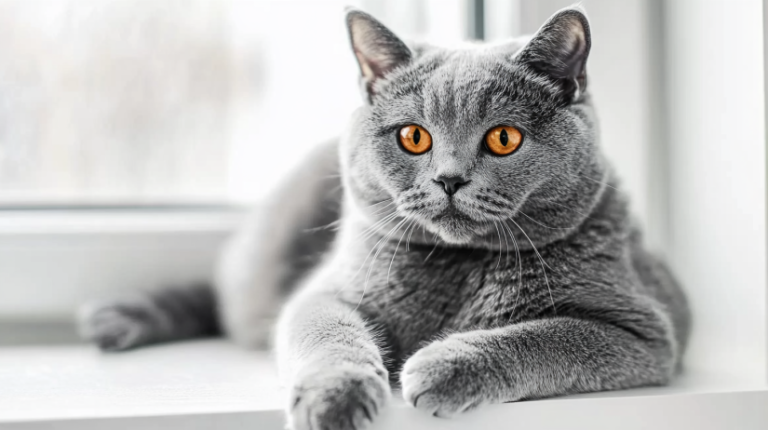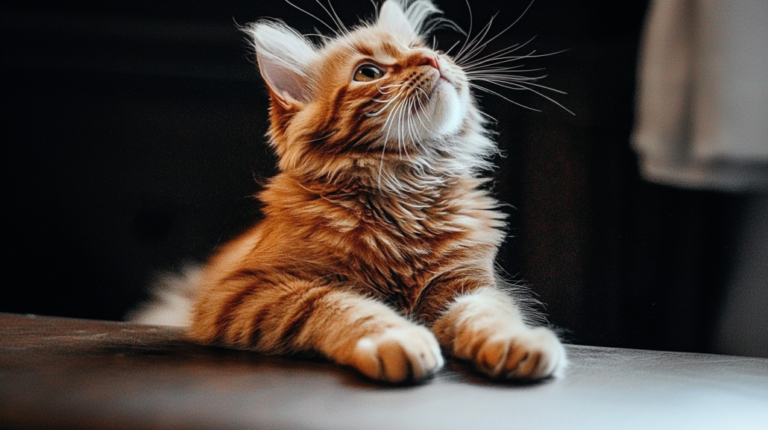Snow Bengal Cat: 7 Stunning Secrets for a Thrilling Pet
Introduction
Picture this: You arrive home after a long day, open the door, and are greeted by a velvety-soft swirl of fur weaving around your ankles. That warm sensation you feel, that delighted giggle escaping your lips—this is the magic a snow bengal cat can bring to your everyday life. Playful, inquisitive, and downright majestic, the snow Bengal is the type of feline that quickly claims the spotlight in any household.
In this in-depth guide, we’ll explore everything from the heritage of the snow Bengal to practical tips on grooming, health considerations, and more. You’ll learn how these brilliant cats came to be, what makes them special, and how you can provide them with a happy, stimulating environment. By the time you finish reading, you’ll feel confident in your understanding of the snow bengal cat—and maybe you’ll be itching to bring one home!
The Origin and Heritage of the Snow Bengal Cat
Bengal cats, including the snow bengal cat, trace their origins to a hybrid cross between the domestic cat and the Asian Leopard Cat (Prionailurus bengalensis). According to the International Cat Association (TICA), Bengal cats became officially recognized in the late 20th century (source). Breeders sought to preserve the wild essence of the Asian Leopard Cat while infusing the friendly demeanor of domestic felines, resulting in the playful and visually stunning snow Bengal.
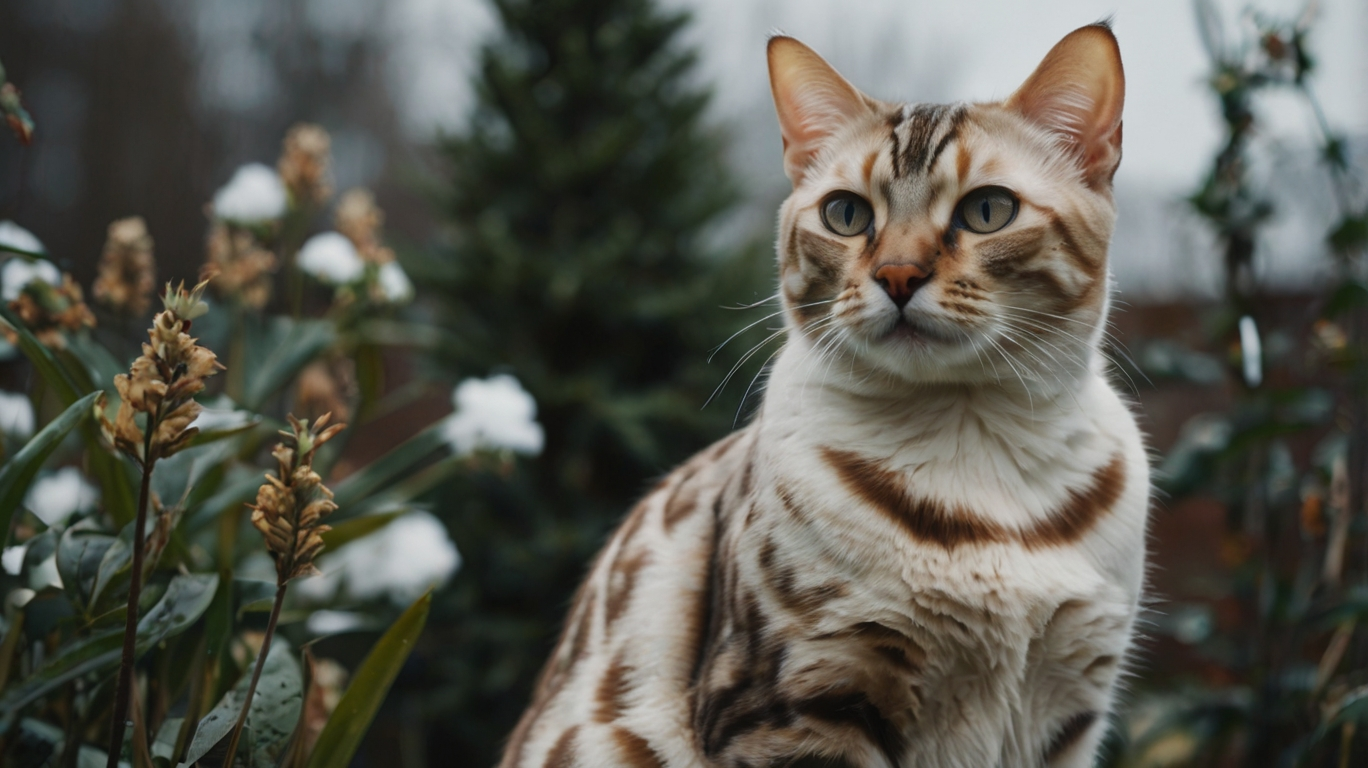
A Quick Ancestral Peek
- Asian Leopard Cat Influence: Known for its vivid coat patterns and agile build.
- Domestic Cat Heritage: Contributes sociability, adaptability, and easy integration into family life.
- Focused Breeding Programs: Meticulous breeding eventually highlighted color variations such as the snow bengal cat.
These cats stand out not just for their exotic looks, but also for their well-rounded temperament. The snow bengal cat is recognized by major cat registries and admired worldwide for its luminous appearance.
What Makes the Snow Bengal Cat Different?
The snow bengal cat sets itself apart from standard Bengals mainly through its distinctive coat coloration. While “regular” Bengals often show a golden or brownish hue, snow Bengals have a paler background that can range from ivory to creamy mocha. Within the snow Bengal category, there are sub-varieties like Seal Lynx Point, Seal Mink, and Seal Sepia, each with its own unique shade.
Typical Coat Patterns
- Rosettes: Rosettes are the hallmark of Bengals. Think of them as multi-toned spots that give a wildcat vibe.
- Marble: Instead of spots, some snow Bengals sport swirling patterns reminiscent of marble.
- Frosty Undertones: A snow bengal cat often has a cool or frosty undertone that amplifies its contrast.
Eye-Catching Eye Colors
Depending on the specific genetic lineage, a snow bengal cat may have varying eye colors:
- Bright blue (commonly found in Seal Lynx Points)
- Aqua or greenish-gold (frequent in Seal Mink or Seal Sepia)
This color range adds another layer of mystique and sets the snow Bengal apart from other felines.
The Snow Bengal Cat Personality
One moment, a snow bengal cat can be perched high, studying your every move with laser-sharp curiosity. The next moment, it’s racing through the house, chasing a feather toy with unrelenting enthusiasm. If you adore a cat that’s both affectionate and brimming with energy, the snow Bengal ticks all the boxes.

Key Traits and Behaviors
- High Intelligence: Snow Bengals can learn simple commands or even fetch toys if you’re consistent with training.
- Playful Nature: They thrive on interaction, often enjoying puzzle games or climbing structures.
- Sociable Disposition: A snow bengal cat generally adores family time and gets along with children or other pets, provided proper introductions.
- Love for Water: Unlike many cats, some Bengals show a fascination with water—don’t be shocked if your snow Bengal joins you in the shower!
This breed’s notable intellect and outgoing spirit make it a joy to have around, but be prepared to keep them mentally engaged. Boredom can lead to mischief or destructive behavior.
Health Overview: Keeping Your Snow Bengal Cat Fit
As a breed, Bengal cats are relatively robust, but that doesn’t mean your snow bengal cat is immune to health problems. Some genetic predispositions require a watchful eye and regular check-ups with a trusted veterinarian.
Common Health Issues
- Hypertrophic Cardiomyopathy (HCM): A heart condition that can affect Bengal cats.
- Progressive Retinal Atrophy (PRA): is a condition where the retina slowly fails, eventually causing blindness.
- Patellar Luxation: Knee joint displacement, causing discomfort and limited mobility.
Many responsible breeders perform health screenings to minimize the chance of passing on these conditions. Even so, your best defense is to schedule routine vet visits. Discuss any subtle changes you notice, from appetite to behavior, so potential issues can be caught early.
Nutrition and Feeding Guidelines
Proper diet is crucial to ensure your snow bengal cat thrives. Bengals in general, including snow variants, often do well on high-quality, protein-rich food. Some owners swear by raw or fresh diets, but commercial wet and dry food can also be suitable if they meet feline nutritional standards.
Nutritional Essentials
- Protein: Look for cat food with real meat—chicken, turkey, or fish—as the first ingredient.
- Balanced Fats: Healthy fats help support skin and coat health.
- Vitamins & Minerals: Commercial cat food typically includes added taurine and other essential nutrients.
- Controlled Portions: Overfeeding can lead to obesity, which stresses joints and the heart.
Tip: Aim for consistency—feed your snow bengal cat at the same times daily and provide clean water at all times. Consult your vet for personalized feeding advice, especially if your cat has specific dietary needs.
Grooming and Coat Care
Despite their exotic allure, the snow bengal cat requires minimal grooming compared to some long-haired breeds. Their short to medium coat resists matting and only needs a weekly comb-through to remove loose fur. Still, there are small yet important routines that can keep your snow Bengal looking and feeling fabulous.
Regular Grooming Checks
- Brushing: A soft bristle brush or grooming glove once a week will suffice.
- Nail Trims: Keep claws neatly trimmed to protect your furniture (and your skin!).
- Ear Cleaning: Inspect ears for dirt or wax buildup and gently clean if necessary.
- Dental Health: Consider brushing their teeth with cat-safe toothpaste or offering dental chews.
With consistent maintenance, your snow bengal cat will reward you with a gleaming coat that’s velvety to the touch.
Creating the Perfect Home Environment
Snow Bengals are famously curious and active. You’ll want to create a home environment that caters to your cat’s instincts for climbing, stalking, and exploring. Providing mental and physical enrichment also helps prevent boredom and destructive behavior.
Essential Household Additions
- Vertical Spaces: Cat trees, shelving, or climbing towers allow your snow bengal cat to perch and observe.
- Interactive Toys: Puzzle feeders and motion-activated toys help keep that agile mind engaged.
- Scratching Posts: Encourage healthy scratching habits to save your couch.
- Safe Outdoor Spaces: If you decide to allow limited outdoor time, consider a secure cat enclosure or harness training.
Remember, your snow bengal cat thrives on mental challenges, so mix up the toys, rotate them, and offer new puzzle games. Your cat will reward you with endless entertainment.
The Importance of Social Interaction
Some cat breeds are perfectly happy to lounge around alone for hours, but the snow bengal cat loves companionship. Don’t be surprised if your Bengal follows you from room to room or demands interactive play sessions.
Tips for Building a Strong Bond
- Daily Playtime: Aiming for at least 15–20 minutes of dedicated play each day strengthens your relationship.
- Positive Reinforcement: Use kind words, a calming touch, or a small treat to support correct responses.
- Introducing New Pets: If you already have another cat or dog, integrate your snow bengal cat gradually and calmly.
If you have a busy schedule, consider providing a second cat companion so your snow Bengal isn’t left lonely. With a bit of planning, your home can be a social paradise for your kitty.
Training a Snow Bengal Cat
Yes, you can train a snow bengal cat—and quite successfully, thanks to its high intelligence! While cats aren’t as universally trainable as dogs, Bengals are known to respond well to positive, reward-based methods.
Simple Training Ideas
- Leash Training: Use a comfortable harness and gentle guidance.
- Clicker Training: Pair a click sound with a treat to reinforce good behaviors.
- Basic Commands: “Sit,” “Come,” or retrieving toys can be taught with patience and consistency.
When training your snow bengal cat, keep sessions short and fun. End on a positive note, so your kitty remains enthusiastic about the learning process.
Exercise and Activity
A bored snow bengal cat can quickly turn your home into a personal jungle gym. Because of their high energy, it’s vital to offer daily outlets for exercise. Climbing, chasing, and leaping are second nature to these athletic felines.
Ideal Exercise Activities
- Laser Pointer Games: Great for sprinting around the house.
- Feather Wands: Stimulate the cat’s natural hunting drive.
- Cat Wheel: Some snow Bengals adore running on specially designed cat wheels.
Aim for multiple short play sessions each day, especially if your cat exhibits restless or mischievous behavior. A tired snow bengal cat is a happy, well-behaved cat.
Indoor vs. Outdoor Life
Many prospective owners wonder if a snow bengal cat can be kept entirely indoors. Bengals adjust quite well to indoor living as long as they have enough enrichment. Many cat parents give their pets controlled outside time or build a secure cat patio.
Pros of Indoor Living
- Safer environment, away from predators or traffic
- Less risk of parasites and infectious diseases
- Easier to monitor nutrition and overall health
Pros of Supervised Outdoor Access
- Opportunity for natural stimulation
- Fresh air and sunlight
- Expanded space to exercise
Ultimately, the decision lies in your lifestyle and your cat’s temperament. Should you choose an indoor-only environment, make sure your snow bengal cat has plenty of mental and physical stimulation inside the home.
Cost Considerations
Owning a snow bengal cat can be a financial commitment. Beyond the initial purchase or adoption fee, factor in monthly costs for food, regular veterinary check-ups, grooming supplies, and unexpected medical bills.
Typical Expenses
- Initial Breeder/Adoption Fee: Can range widely depending on pedigree
- Food & Supplements: High-quality cat food is a must
- Vet Care: Annual exams, vaccinations, and potential emergency care
- Accessories: Toys, cat trees, litter boxes, and more
Planning ahead with pet insurance can help offset large medical expenses. Talk with your vet about the best coverage options and whether it fits your snow bengal cat’s needs.
Potential Challenges of Owning a Snow Bengal Cat
Like any pet, a snow bengal cat isn’t all purrs and cuddles. Their high energy can be a handful for some households. If your schedule doesn’t allow for daily play sessions, you might find your cat seeking out its own entertainment—like climbing curtains or knocking items off shelves.
Behavioral Hurdles
- Separation Anxiety: Snow Bengals can become distressed if left alone too often.
- Destructive Play: Without guidance, a bored Bengal might chew, claw, or dig in unwanted places.
- Vocalization: Bengals can be talkative, sometimes meowing or chirping at all hours.
With a proactive approach—providing enrichment, setting routines, and offering consistent training—these challenges can be managed effectively.
Comparing Snow Bengal Cat to Other Bengal Coats (Table)
Below is a simple table comparing different Bengal coat variations, including the snow Bengal.
| Bengal Coat Variation | Typical Base Color | Distinctive Traits | Snow Bengal Example |
|---|---|---|---|
| Brown Bengal | Brown to golden | Rich, dark rosettes; green/gold eyes | Not applicable for “snow bengal cat” |
| Silver Bengal | Silver to charcoal | Rosettes show strong contrast | Not applicable for “snow bengal cat” |
| Snow Bengal | Ivory to cream | Cool undertones, blue/aqua eyes | Any Seal Lynx, Mink, or Sepia pattern |
As the table shows, the snow bengal cat truly stands out with its frosty base color and captivating eyes, differentiating it from other types of Bengal coats.
Real-Life Experiences from Snow Bengal Owners
Many proud owners of a snow bengal cat share glowing testimonials about how their feline has enriched their lives. One owner, Sarah, recounts how her snow Bengal, Luna, wakes her up every morning with a gentle nuzzle—followed by a swift dash to the living room for a game of “chase the toy mouse.” Another owner, David, says his cat, Frosty, enjoys puzzle feeders so much that mealtime doubles as a mini-workout.
These stories confirm that while the snow Bengal can be quite a handful, the rewards in affection and entertainment are immeasurable.
How to Find a Healthy Snow Bengal Cat
When searching for a snow bengal cat, consider both reputable breeders and adoption/rescue organizations. Reputable breeders put their cats’ health first, run genetic tests, and keep complete records.
Questions to Ask a Breeder
- Health Screenings: Are HCM and PRA tests done on breeding cats?
- Living Conditions: Do kittens grow up in a family-oriented environment?
- Parent Cats: Can you meet them or see photos/video?
- Contracts and Guarantees: Is there a health guarantee in the contract?
Don’t discount adoption. Older snow Bengals sometimes need new homes due to unforeseen circumstances. Rescue groups can help match you with a cat that suits your lifestyle.
Tips for Introducing a Snow Bengal Cat to Your Home
Bringing a new snow bengal cat home is exciting! Proper introduction sets the stage for a smooth transition.
First Steps
- Create a Safe Room: Set up a quiet area with litter, food, water, and toys.
- Slow Introductions: If you have other pets, let them sniff each other’s scent through doors or blankets before face-to-face encounters.
- Positive Associations: Offer treats or praise whenever your cat explores a new space or meets a new person.
Patience is key. The extra time you invest in this process fosters trust and cements the bond between you and your snow Bengal.
Vet Care and Preventive Measures
Beyond regular wellness checks, your snow bengal cat will benefit from proactive healthcare measures. Keep vaccinations updated, discuss parasite prevention (fleas, ticks, worms), and consider microchipping for identification.
Additional Preventive Tips
- Annual Bloodwork: Cats can hide illness; routine screenings catch issues early.
- Dental Exams: Oral health impacts overall well-being.
- Monitoring Weight: Obesity can exacerbate existing health problems.
Consult with your vet about the best approach for your cat’s life stage—kitten, adult, or senior—and tailor your care plan accordingly.
Training Schedules & Routines
Since a snow bengal cat thrives on structure, establishing a daily routine can work wonders. Many owners find success scheduling training sessions around mealtime or in the early evening when the cat is still alert.
Sample Daily Routine
- Morning: Brief play, fresh food and water, cleaning the litter box
- Afternoon: Quiet time or puzzle toys if you’re away
- Evening: Interactive play, short training session with treats
- Night: Wind-down; ensure your snow bengal cat has a cozy place to sleep
Consistency helps your cat feel secure, which can reduce anxiety and behavioral issues.
Potential Allergies and Sensitivities
While there’s no completely hypoallergenic cat, some owners report fewer allergy symptoms with a snow bengal cat compared to other breeds. This might be due to Bengals’ short coat and lower shedding levels. However, it’s crucial to spend time with a Bengal in person to gauge any allergic reaction if you’re prone to pet allergies.
Minimizing Allergic Reactions
- Frequent Vacuuming: Reduce dander in carpets and furniture.
- Air Purifiers: Help remove allergens from the air.
- Regular Grooming: Brushing your snow bengal cat can minimize loose fur and dander.
If allergies are severe, consult with a medical professional and consider alternative pet options or treatments.
Traveling with a Snow Bengal Cat
Many Bengals, including the snow bengal cat, adapt to travel better than more sedentary feline breeds, provided they’re introduced to it early. If you plan on trips, start with short car rides. Reward calm behavior and ensure the carrier is comfortable.
Road Trip Tips
- Secure Carrier: Fasten it with a seatbelt for safety.
- Familiar Items: Blanket or toy that smells like home.
- Frequent Breaks: Offer water and a chance to use a portable litter box.
Some snow Bengals even learn to tolerate airline travel, though it’s recommended only if necessary. Always check airline pet policies in advance.
Behavioral Enrichment Ideas
Enrichment goes beyond toys. Enrichment is about keeping your snow bengal cat mentally stimulated and content. Rotate new stimuli into your cat’s day, such as cardboard boxes to explore or a window perch for watching birds.
Simple Enrichment Hacks
- Hiding Treats: Encourage foraging by placing treats in safe, unexpected spots.
- Cat TV: Videos of birds or fish can keep a cat fascinated.
- Scent Exploration: Cat-safe herbs like dried catnip or silver vine can spark curiosity.
By mixing up your enrichment strategies, you’ll keep your snow bengal cat mentally agile and physically active.
Social Media Stardom
Snow Bengals are photogenic by nature, so don’t be surprised if your cat steals the show on Instagram or TikTok. Capture that gorgeous coat gleaming in the sunlight or film a play session to share with fellow cat enthusiasts. The combination of piercing eyes, unique coat markings, and playful behavior often garners plenty of online admiration.
Pro Tip: If you’re comfortable with social media, documenting your cat’s adventures can be a fun, interactive way to connect with other Bengal owners. Just remember that your cat’s well-being comes first; no social media “fame” is worth stressing out your snow bengal cat.
FAQs Section
How long do snow Bengals live?
A snow bengal cat typically lives 12–16 years with proper care. Regular vet checkups, a balanced diet, and enrichment can prolong this lifespan. Each snow bengal cat is unique, so individual health factors also matter.
What is the average lifespan of a snow Bengal?
Most snow bengal cat companions reach 12–16 years under quality care. Routine veterinary care, good nutrition, and exercise help them thrive. Genetics, environment, and consistent monitoring also play crucial roles.
Can Bengals be kept indoors?
Yes, a snow bengal cat can live happily indoors if given enough enrichment. Provide climbing structures, puzzle feeders, and interactive toys. Daily play sessions help channel your snow bengal cat’s energy in a positive way.
Is it okay to keep my snow Bengal exclusively indoors?
Keeping a snow bengal cat indoors is fine with proper mental and physical stimulation. Offer cat trees, interesting toys, and regular interactive play. A well-enriched indoor environment satisfies their curious nature.
What is the rarest Bengal cat color?
Among Bengals, the snow bengal cat is often considered rare due to its frosty coat. Other uncommon colors include silver and charcoal variations. Still, the snow bengal cat stands out for its enchanting hue and piercing eyes.
Which Bengal color is the hardest to find?
Many enthusiasts cite the snow bengal cat as rarer, thanks to its pale background. Silver and charcoal Bengals can also be elusive. Overall, the snow bengal cat remains especially prized for its radiant appearance.
Conclusion
A snow bengal cat offers an enthralling blend of elegance, intelligence, and spirited fun. From their frosty coats to their larger-than-life personalities, snow Bengals prove that a domestic cat can bring the excitement of the wild right into your living room. By understanding their needs—healthcare, grooming, mental stimulation, and plenty of affection—you’ll set the stage for a thriving, life-long bond.
So go ahead, delve into the fascinating world of the snow bengal cat, and share your experiences in the comments. Who knows? Your next best friend could be a glowing, inquisitive snow Bengal, ready to dazzle you with every purr and playful leap.
For further information on responsible cat ownership and adoption resources, consult the ASPCA, a reputable organization dedicated to animal welfare.


